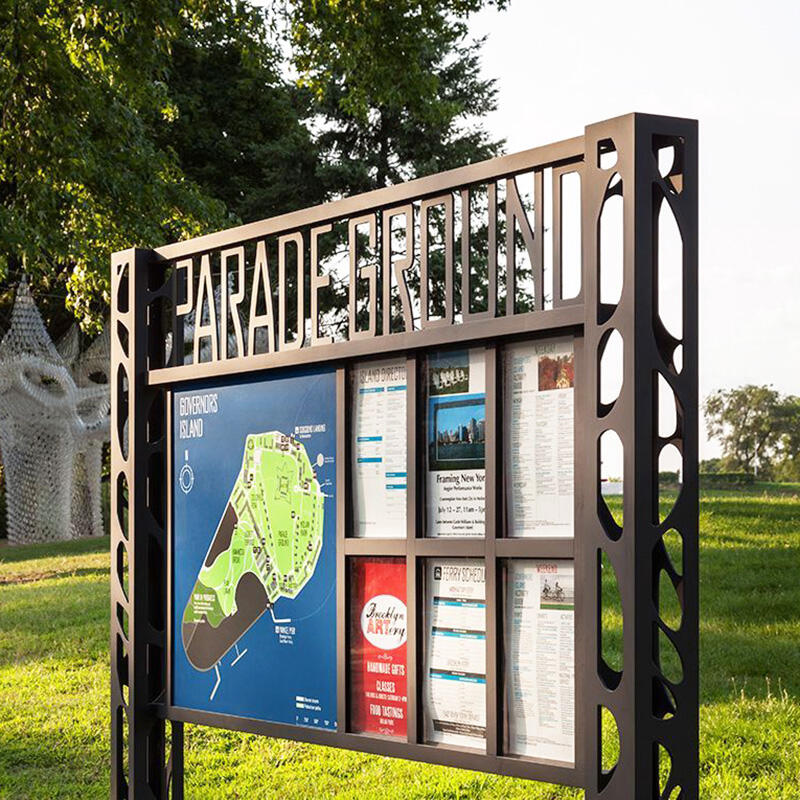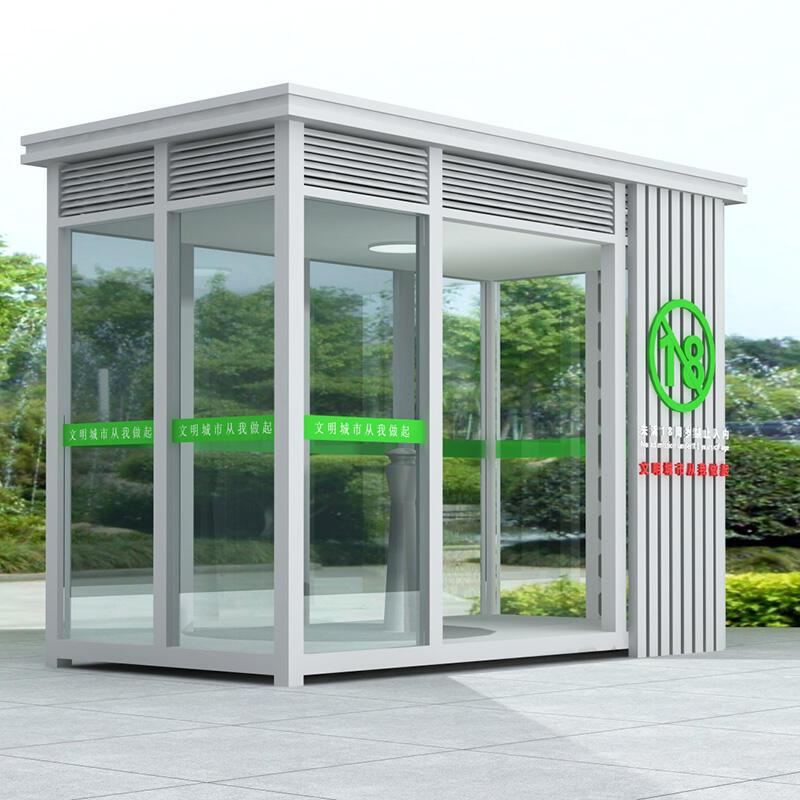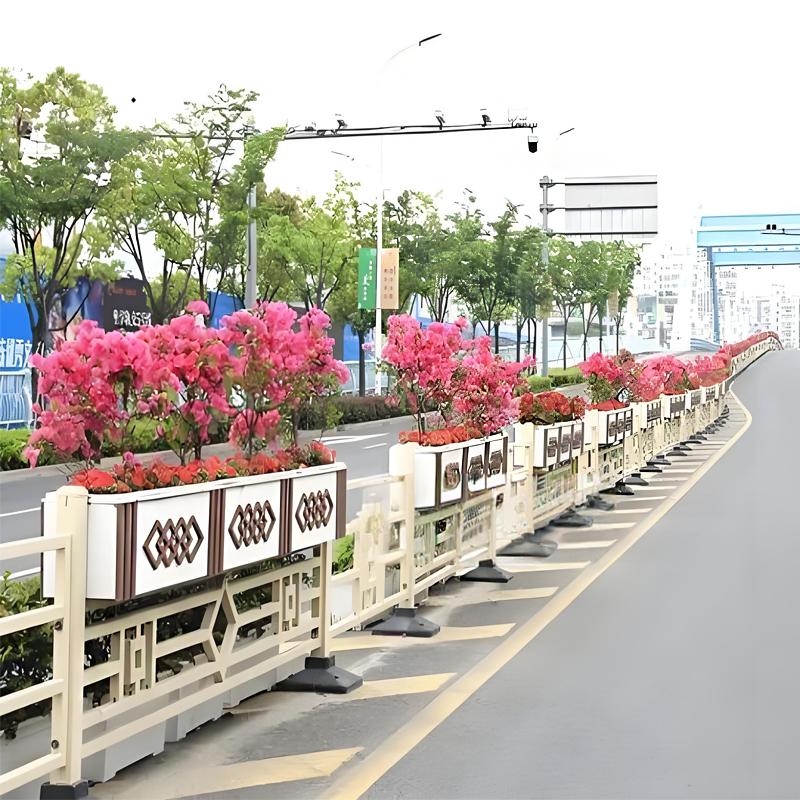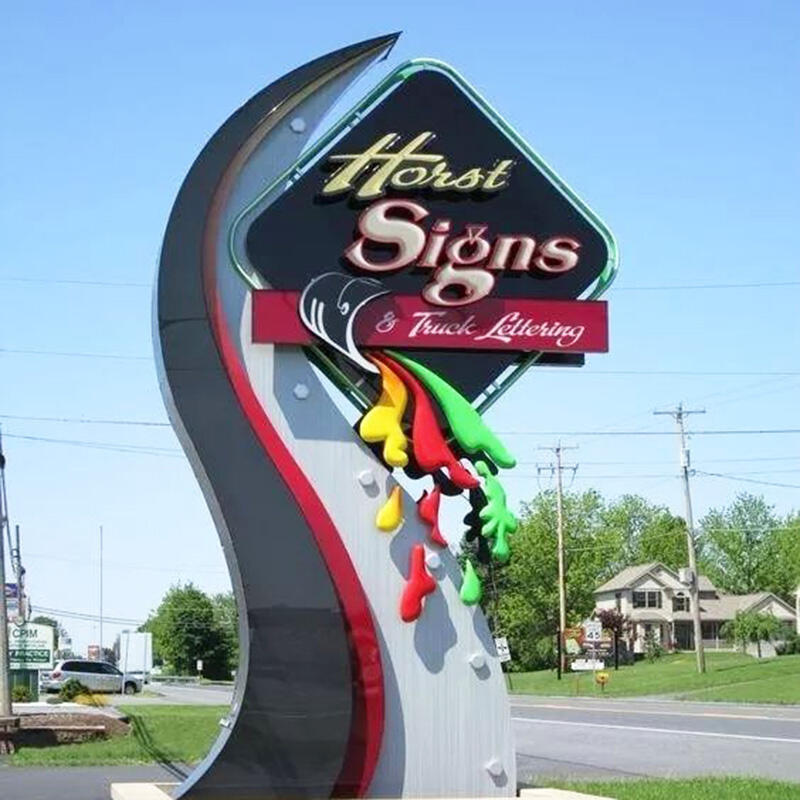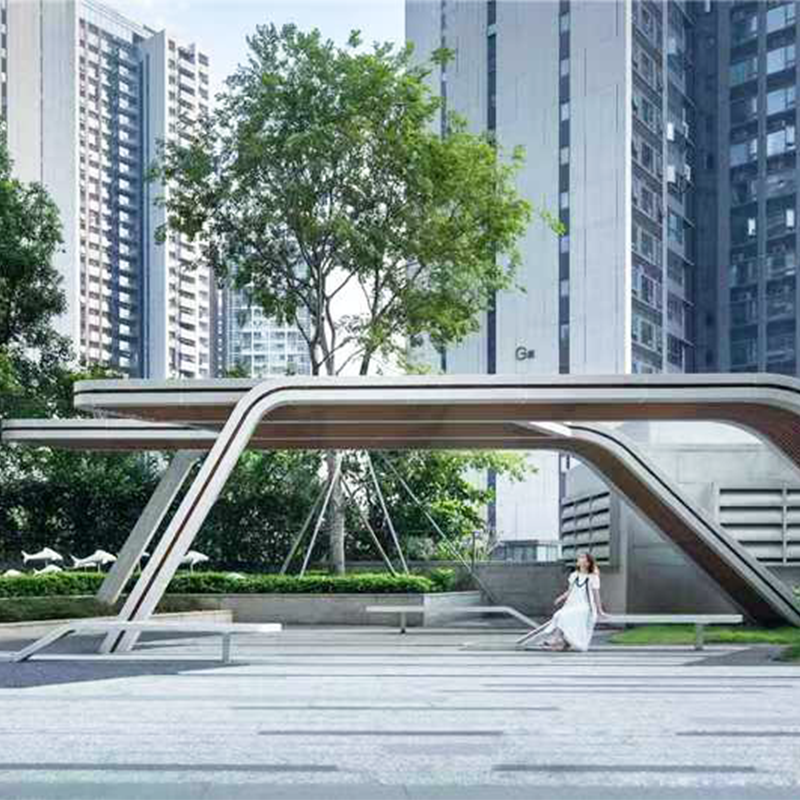ป้ายโฆษณาเป็นเครื่องมือการสื่อสารทางทัศนวิสัยที่สำคัญซึ่งช่วยโปรโมตแบรนด์ ผลิตภัณฑ์ หรือบริการไปยังกลุ่มเป้าหมาย ป้ายเหล่านี้ทำหน้าที่เหมือนพนักงานขายเงียบๆ โดยดึงดูดความสนใจและส่งผลต่อการตัดสินใจของผู้บริโภค การโฆษณากลางแจ้งโดยเฉพาะ มีบทบาทสำคัญในการเพิ่มความรับรู้ของผู้บริโภค เป็นสื่อที่มีพลวัตซึ่งช่วยให้เกิดการโต้ตอบโดยตรงกับกลุ่มผู้ชมจำนวนมาก ส่งเสริมการจดจำและการรับรู้แบรนด์อย่างมีนัยสำคัญ เมื่อธุรกิจเริ่มใช้ประโยชน์จากตำแหน่งการตั้งป้ายเหล่านี้มากขึ้น ความสำคัญของการโฆษณาในรูปแบบนี้ก็ยิ่งเติบโตต่อไป
การสำรวจประเภทต่างๆ ของป้ายโฆษณาจะแสดงให้เห็นถึงความหลากหลายในวิธีการตลาดและงบประมาณที่ครอบคลุม ประเภททั่วไปรวมถึงป้ายโฆษณาขนาดใหญ่ (billboards), ป้ายบอกทาง, ป้ายไฟนีออน, ธงผ้า และจอแสดงผลดิจิทัล ป้ายโฆษณาขนาดใหญ่และป้ายบอกทางเป็นแบบดั้งเดิมแต่มีประสิทธิภาพสูง โดยมักวางตำแหน่งอย่างยุทธศาสตร์บนทางหลวงและถนนที่มีรถพลุกพล่านเพื่อให้มีความโดดเด่นมากที่สุด ป้ายไฟนีออนมอบแสงสว่างที่โดดเด่นและน่าสนใจ เหมาะสำหรับการโฆษณาในเวลากลางคืน ธงผ้ามีความยืดหยุ่นในการออกแบบและการติดตั้ง ในขณะที่จอแสดงผลดิจิทัลสามารถนำเสนอเนื้อหาได้อย่างมีชีวิตชีวาและปรับเปลี่ยนตามเหตุการณ์แบบเรียลไทม์ หลักฐานเชิงประจักษ์ชี้ให้เห็นว่าสื่อโฆษณากลางแจ้งเหล่านี้มีศักยภาพในการมีส่วนร่วมที่สำคัญ โดยมอบทั้งความโดดเด่นในระดับกว้างและความสามารถในการกำหนดเป้าหมายในพื้นที่เฉพาะ
วางแผนการติดตั้งป้ายโฆษณาของคุณ
กำหนดเป้าหมายที่ชัดเจนสำหรับป้ายของคุณ
การกำหนดวัตถุประสงค์ที่ชัดเจนสำหรับป้ายโฆษณาของคุณเป็นสิ่งสำคัญต่อความสำเร็จของมัน วัตถุประสงค์เหล่านี้สามารถรวมถึงการเพิ่มปริมาณผู้คนที่เข้ามาในร้าน การเพิ่มการรับรู้แบรนด์ หรือการกระตุ้นยอดขาย และจำเป็นต้องสามารถวัดผลได้ วิธีการ เช่น การวัดผลยอดขาย การรับฟังความคิดเห็นจากลูกค้า และการวิเคราะห์การเข้าชมเว็บไซต์ สามารถใช้เพื่อติดตามประสิทธิภาพของป้ายโฆษณา การเชื่อมโยงวัตถุประสงค์เหล่านี้กับกลยุทธ์การตลาดโดยรวมจะช่วยเพิ่มความสอดคล้องและอาจนำไปสู่ผลตอบแทนที่สำคัญ เคสศึกษาหลายครั้งเน้นย้ำว่าธุรกิจที่สามารถผสานรวมเป้าหมายการโฆษณาเข้ากับป้ายโฆษณาได้อย่างประสบความสำเร็จ มักจะมีความโดดเด่นของแบรนด์และการมีส่วนร่วมของลูกค้าเพิ่มขึ้น
การเลือกสถานที่ที่เหมาะสมสำหรับการมองเห็นสูงสุด
การเลือกสถานที่ที่เหมาะสมสำหรับป้ายโฆษณาของคุณเป็นสิ่งสำคัญยิ่งเพื่อเพิ่มความโดดเด่นและประสิทธิภาพ สิ่งที่ควรพิจารณา เช่น ปริมาณการจราจร การแข่งขันในพื้นที่ใกล้เคียง และพฤติกรรมของกลุ่มเป้าหมายควรถูกวิเคราะห์ สถิติแสดงให้เห็นว่าสถานที่ที่มีความโดดเด่นสูง เช่น ทางแยกที่พลุกพล่านหรือศูนย์กลางย่านช้อปปิ้ง สามารถเพิ่มการมีส่วนร่วมได้อย่างมาก นอกจากนี้ ควรมีความใส่ใจในเทคนิคการมองเห็น เช่น ความสูงของป้าย ระยะห่างจากถนน และเส้นสายตาที่เหมาะสม เพื่อให้แน่ใจว่าป้ายจะถึงกลุ่มผู้ชมเป้าหมายอย่างมีประสิทธิภาพ วิธีการวางตำแหน่งเชิงกลยุทธ์เหล่านี้เป็นกุญแจสำคัญในการทำให้ป้ายโฆษณาหรือเสาป้ายของคุณทำงานได้อย่างมีประสิทธิผล
ทำความเข้าใจเกี่ยวกับกฎระเบียบและใบอนุญาตในท้องถิ่น
การนำทางผ่านกฎระเบียบเกี่ยวกับป้ายโฆษณาต้องอาศัยความเข้าใจอย่างลึกซึ้งเกี่ยวกับกฎหมายการแบ่งเขตท้องถิ่น ข้อกำหนดในการขอใบอนุญาต และข้อจำกัดเรื่องขนาด การจัดการกระบวนการของรัฐบาลท้องถิ่นอย่างมีประสิทธิภาพเป็นสิ่งสำคัญเพื่อหลีกเลี่ยงปัญหาทางกฎหมายจากการไม่ปฏิบัติตาม ตัวอย่างในชีวิตจริงของธุรกิจที่เผชิญกับความท้าทายเนื่องจากความผิดพลาดด้านกฎระเบียบเหล่านี้แสดงให้เห็นถึงความสำคัญของการศึกษาและเตรียมการอย่างครอบคลุม โดยการเข้าใจกฎระเบียบท้องถิ่นเกี่ยวกับป้ายโฆษณาและการขอใบอนุญาตที่จำเป็น ธุรกิจสามารถรับรองความปฏิบัติตามกฎระเบียบและป้องกันการหยุดชะงักในกลยุทธ์การตลาดได้ การปฏิบัติตามกฎระเบียบไม่เพียงแต่ช่วยหลีกเลี่ยงค่าปรับเท่านั้น แต่ยังเสริมสร้างความน่าเชื่อถือและความเป็นมืออาชีพรวมถึงภาพลักษณ์ต่อสาธารณะ
การออกแบบป้ายโฆษณาที่มีประสิทธิภาพ
องค์ประกอบสำคัญของการออกแบบป้ายที่ประสบความสำเร็จ
การสร้างป้ายที่มีผลกระทบเริ่มต้นจากการเข้าใจองค์ประกอบการออกแบบที่สำคัญ เช่น สี ฟอนต์ ภาพ และรูปแบบ การใช้ทฤษฎีสีมีบทบาทสำคัญ เนื่องจากเฉดสีต่าง ๆ สามารถก่อให้เกิดอารมณ์และความรู้สึกแตกต่างกันในผู้บริโภค ตัวอย่างเช่น สีแดงอาจแสดงถึงความเร่งด่วน ในขณะที่สีน้ำเงินมักสื่อถึงความน่าเชื่อถือ การเลือกสีที่เสริมกันควรพิจารณาจากแบรนด์ เพื่อรักษาความสม่ำเสมอและดึงดูดใจ งานวิจัยจากวารสาร Journal of Business Research ชี้ให้เห็นว่าสีสามารถเพิ่มการรับรู้แบรนด์ได้มากถึง 80% การออกแบบที่ดีจะทำให้ข้อความชัดเจนและดึงดูดความสนใจ แคมเปญที่ประสบความสำเร็จ เช่น ป้ายโฆษณาของ Nike ใช้การออกแบบที่เด่นชัดและชัดเจนเพื่อส่งข้อความผ่านการเล่าเรื่องทางภาพ ซึ่งแสดงให้เห็นถึงความสำคัญของการใช้ป้ายโฆษณาที่มีประสิทธิภาพ
การนำเอกลักษณ์ของแบรนด์มาใช้ในป้ายของคุณ
การผสานองค์ประกอบของเอกลักษณ์แบรนด์ เช่น โลโก้และคำขวัญลงในการออกแบบป้ายโฆษณาเป็นสิ่งสำคัญสำหรับการเสริมสร้างการรู้จักแบรนด์ การคงความสม่ำเสมอในสื่อต่าง ๆ ของแบรนด์ไม่เพียงแต่ช่วยเพิ่มการรู้จักแบรนด์เท่านั้น แต่ยังช่วยสร้างความภักดีต่อแบรนด์อีกด้วย แบรนด์ใหญ่ เช่น Coca-Cola มักจะนำโลโก้และสีสันที่เป็นเอกลักษณ์ของตนมาใช้อย่างต่อเนื่องในป้ายโฆษณาทุกประเภท เพื่อรักษาความเชื่อมโยงของแบรนด์ แนวทางที่เป็นเอกภาพนี้ช่วยเสริมสร้างข้อความหลักของพวกเขา ทำให้ข้อความนั้นจดจำได้ง่ายและสามารถรู้จักได้ทันที การรักษาความเหมือนกันในป้ายโฆษณาต่าง ๆ ตั้งแต่ป้ายโฆษณาขนาดใหญ่จนถึงป้ายเล็ก ๆ เป็นสิ่งสำคัญสำหรับภาพลักษณ์ของแบรนด์ที่เป็นหนึ่งเดียว
การรับรองความชัดเจนและการมองเห็นได้จากระยะไกล
ความชัดเจนเป็นสิ่งสำคัญในการ保证ว่าป้ายของคุณสามารถอ่านได้ง่ายโดยผู้ชม แม้จะอยู่ห่างออกไปก็ตาม ปัจจัยสำคัญรวมถึงการเลือกขนาดตัวอักษรที่เหมาะสม การรักษาความแตกต่างสูงระหว่างตัวอักษรกับพื้นหลัง และหลีกเลี่ยงความรกโดยการทำให้ข้อความกระชับ ตามคำแนะนำจากผู้เชี่ยวชาญด้านการออกแบบป้าย ตัวอักษรควรมีความชัดเจนจากระยะทางอย่างน้อยสิบฟุตสำหรับทุกหนึ่งนิ้วของความสูงของตัวอักษร เพื่อให้มั่นใจในความสามารถอ่านได้ของป้าย นอกจากนี้ คุณสมบัติของการมองเห็น เช่น การมีแสงสว่างเพียงพอ ก็มีความสำคัญเช่นกัน โดยเฉพาะอย่างยิ่งสำหรับการมองเห็นในเวลากลางคืน ข้อมูลแสดงให้เห็นว่าป้ายที่มีแสงสว่างดีมีแนวโน้มที่จะดึงดูดความสนใจของผู้บริโภคมากขึ้นหลังพระอาทิตย์ตกดิน เนื่องจากความสามารถในการอ่านที่ดีขึ้น ดังนั้น การเน้นทั้งความชัดเจนและความมองเห็นเป็นสิ่งสำคัญสำหรับการสร้างป้ายโฆษณาที่ประสบความสำเร็จและสร้างความประทับใจให้กับกลุ่มเป้าหมาย
กระบวนการติดตั้ง: คู่มือทีละขั้นตอน
การสำรวจสถานที่ก่อนติดตั้ง
การดำเนินการสำรวจไซต์ก่อนติดตั้งเป็นสิ่งสำคัญสำหรับการประเมินความเหมาะสมของสถานที่สำหรับการติดตั้งป้าย กระบวนการนี้เกี่ยวข้องกับการตรวจสอบสภาพทางกายภาพ เช่น พื้นที่ว่าง เสถียรภาพของพื้นผิวที่ใช้ติดตั้ง และการสัมผัสกับปัจจัยทางสิ่งแวดล้อม การสำรวจไซต์อย่างละเอียดช่วยระบุปัญหาที่อาจเกิดขึ้นและปรับเปลี่ยนวิธีแก้ไขให้เหมาะสม รายงานในอุตสาหกรรมชี้ให้เห็นว่าปัญหาทั่วไป เช่น โครงสร้างที่ไม่แข็งแรงหรือพื้นที่ที่ไม่เพียงพอ สามารถส่งผลกระทบอย่างมากต่อความสำเร็จของการติดตั้ง ดังนั้น การประเมินไซต์อย่างรอบคอบจึงมีความสำคัญในการหลีกเลี่ยงความผิดพลาดที่อาจทำให้เสียค่าใช้จ่ายสูงและช่วยให้การติดตั้งราบรื่น
การเตรียมเครื่องมือและอุปกรณ์
ก่อนเริ่มติดตั้งป้าย จำเป็นต้องเตรียมเครื่องมือและอุปกรณ์ที่จำเป็น เครื่องมือพื้นฐานประกอบด้วยสว่านสำหรับยึดป้าย ชุดขึ้นสูงสำหรับเข้าถึงพื้นที่สูง และอุปกรณ์ความปลอดภัย เช่น หมวกนิรภัยและถุงมือ เพื่อปกป้องผู้ติดตั้ง การเตรียมอุปกรณ์ที่เหมาะสมไม่เพียงแต่ช่วยเพิ่มประสิทธิภาพเท่านั้น แต่ยังช่วยให้งานมีคุณภาพสูงอีกด้วย นี่คือรายการตรวจสอบอย่างรวดเร็วสำหรับการเตรียมการที่มีประสิทธิภาพ:
- จัดเตรียมเครื่องมือและอุปกรณ์ล่วงหน้า
- จัดประชุมสรุปประเด็นความปลอดภัยสำหรับทีมติดตั้ง
- ตรวจสอบเครื่องมือเพื่อให้มั่นใจว่าอยู่ในสภาพพร้อมใช้งาน
การดำเนินขั้นตอนเหล่านี้จะช่วยเพิ่มความปลอดภัยและความแม่นยำในกระบวนการติดตั้ง
การยึดป้าย: ป้ายติดผนังกับป้ายตั้งพื้น
การเข้าใจความแตกต่างระหว่างการติดตั้งป้ายที่ติดผนังกับป้ายที่ติดพื้นเป็นสิ่งสำคัญสำหรับการติดตั้งที่ประสบความสำเร็จ ป้ายที่ติดผนังจำเป็นต้องคำนึงถึงความสามารถในการรับน้ำหนักของผนังและตรวจสอบให้แน่ใจว่าป้ายสามารถมองเห็นได้ชัดเจนสำหรับกลุ่มเป้าหมาย ส่วนป้ายที่ติดพื้นนั้นเกี่ยวข้องกับการคงความมั่นคงของฐานและการพิจารณาเรื่องการมองเห็นสำหรับทั้งคนเดินเท้าและยานพาหนะ การศึกษากรณีตัวอย่างแสดงให้เห็นว่าเมื่อทำอย่างดีแล้ว แต่ละเทคนิคสามารถเพิ่มประสิทธิภาพในการเข้าถึงกลุ่มเป้าหมายได้อย่างมาก ข้อมูลจากการสังเกตพบว่าป้ายที่วางตำแหน่งอย่างยุทธศาสตร์ไม่ว่าจะติดผนังหรือติดพื้น สามารถเพิ่มความโดดเด่นของแบรนด์และความสนใจจากผู้บริโภคได้
การจัดการชิ้นส่วนไฟฟ้าสำหรับป้ายที่มีแสงสว่าง
การจัดการชิ้นส่วนไฟฟ้าระหว่างการติดตั้งป้ายไฟจำเป็นต้องมีมาตรการความปลอดภัยที่เข้มงวด ควรใช้ช่างไฟฟ้าที่มีคุณสมบัติเหมาะสมในการดูแลเรื่อง เช่น การเดินสายไฟและการเชื่อมต่อโมดูล LED อย่างปลอดภัย วิธีการแบบเป็นระบบเริ่มต้นจากการหาอุปกรณ์ไฟฟ้าคุณภาพสูงและปฏิบัติตามมาตรฐานของอุตสาหกรรมสำหรับการติดตั้งป้าย กระบวนการนี้รวมถึงขั้นตอน เช่น การยึดสายไฟให้แน่นหนาและการทดสอบการทำงานอย่างละเอียดเพื่อให้มั่นใจในความปลอดภัยและความน่าเชื่อถือ การปฏิบัติตามมาตรการความปลอดภัยที่กำหนดจะช่วยลดความเสี่ยงและรับประกันอายุการใช้งานและความมีประสิทธิภาพของป้ายโฆษณาแบบมีแสงสว่าง
การบำรุงรักษาและความคงทนของป้ายโฆษณา
การทำความสะอาดและการตรวจสอบตามปกติ
การดูแลป้ายโฆษณาต้องมีการทำความสะอาดและการตรวจสอบเป็นประจำเพื่อให้แน่ใจว่ามีความชัดเจนสูงสุดและโครงสร้างที่แข็งแรง การวางแผนทำความสะอาดอย่างสม่ำเสมอควรพิจารณาถึงปัจจัยทางสภาพแวดล้อม เช่น มลพิษและการถูกแสงแดดหรือฝน หากเปรียบเทียบ ป้ายในเขตเมืองที่มีมลพิษสูงจะต้องทำความสะอาดบ่อยกว่าป้ายในเขตชนบท ตามรายงานที่ตีพิมพ์ในวารสาร Journal of Environmental Design การบำรุงรักษาเป็นประจำสามารถยืดอายุการใช้งานของป้ายได้มากถึง 25% และเพิ่มความชัดเจนได้อย่างมีนัยสำคัญ ประโยชน์เหล่านี้ทำให้การจัดสรรงบประมาณเฉพาะสำหรับการบำรุงรักษาป้ายอย่างต่อเนื่องเป็นสิ่งที่คุ้มค่า เพื่อป้องกันการเสื่อมสภาพเร็วกว่ากำหนดและรักษาประสิทธิภาพในการโฆษณา
การแก้ไขความเสียหายจากสภาพอากาศและการสึกหรอ
ความเสียหายจากสภาพอากาศเป็นปัญหาที่พบบ่อยสำหรับป้ายโฆษณา โดยลม ฝน และแสงแดดสามารถทำให้เกิดการสึกหรอได้ ความเสียหายแต่ละประเภทต้องการวิธีการซ่อมแซมที่แตกต่างกัน เช่น ความเสียหายจากน้ำอาจจำเป็นต้องใช้วัสดุที่ทนน้ำได้ ในขณะที่ความเสียหายจากแสงแดดอาจต้องใช้เคลือบผิวด้วยสารป้องกันรังสี UV การศึกษาโดย International Journal of Outdoor Advertising ชี้ให้เห็นว่าป้ายที่ทำจากวัสดุคอมโพสิตและเคลือบผิวด้วยวิธีพิเศษสามารถทนต่อสภาพแวดล้อมที่รุนแรงได้ดีกว่า การวิจัยนี้เน้นย้ำถึงความสำคัญของการเลือกวัสดุและออกแบบที่คงทนเพื่อให้เหมาะสมกับสภาพภูมิอากาศเฉพาะ ซึ่งจะช่วยให้ป้ายไม่เพียงแต่คงอยู่ได้ แต่ยังทำงานได้อย่างมีประสิทธิภาพในฐานะเครื่องมือโฆษณา
เมื่อใดควรซ่อมหรือเปลี่ยนป้ายของคุณ
การตัดสินใจว่าจะซ่อมหรือเปลี่ยนป้ายนั้นเกี่ยวข้องกับการวิเคราะห์ระดับความเสียหายและความคุ้มค่าทางต้นทุน ป้ายที่เสียหายมากเกินไปมักจะทำให้ค่าใช้จ่ายในการซ่อมแซมสูงกว่าการเปลี่ยนใหม่ นอกจากนี้ การเปลี่ยนจากการซ่อมเป็นการออกแบบใหม่สามารถสร้างประโยชน์ในระยะยาวได้ การออกแบบใหม่ที่สดใสและมีพลังสามารถเพิ่มความโดดเด่นของแบรนด์และความสนใจของลูกค้าได้อย่างมาก ธุรกิจสามารถศึกษากรณีศึกษาจากบริษัทที่เปลี่ยนจากการซ่อมเป็นการแทนที่อย่างประสบความสำเร็จ ส่งผลให้การโฆษณาดีขึ้นและได้รับผลตอบแทนจากการลงทุนที่ดีขึ้น กระบวนการตัดสินใจนี้ควรพิจารณาต้นทุนในระยะสั้นเมื่อเทียบกับผลประโยชน์ด้านความสวยงามและการใช้งานในระยะยาว เพื่อให้แน่ใจว่าป้ายยังคงเป็นสิ่งอำนวยความสะดวกสาธารณะที่มีคุณค่าสำหรับการโปรโมตแบรนด์


